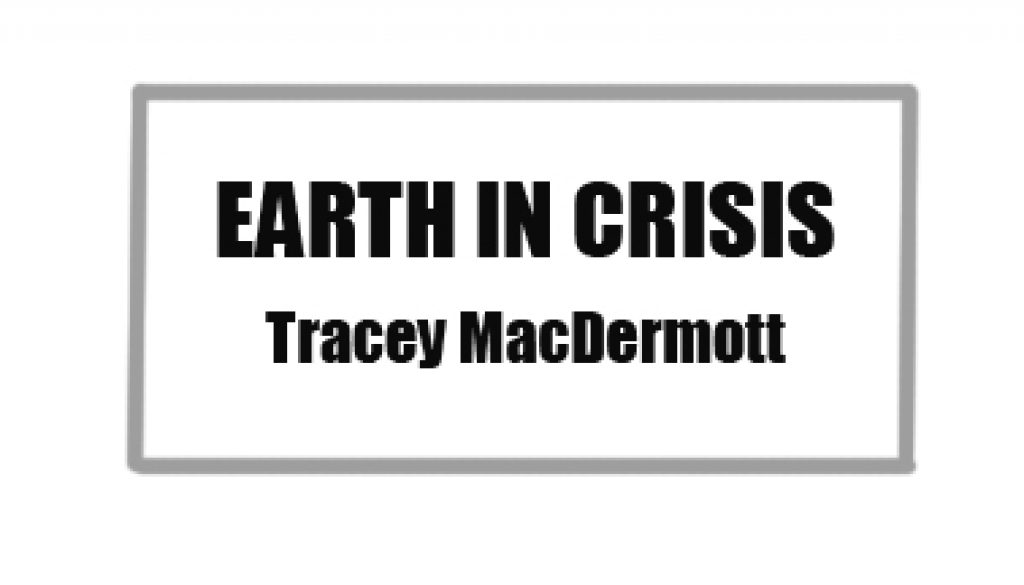When It Rains Plastic
Tiny Bits Are In Our Air, Our Drinking Water, Our Oceans. That’s A Big Problem.
By Tracey MacDermott
For the GPHC

The world has an addiction, and it’s to plastic.
News that microplastics — tiny pieces of plastics — are swirling around our earth’s atmosphere at alarming levels, has dominated the airwaves for the past month.
Unfortunately, this is not new. Last year’s reports were of plastic particles literally raining down on our National Parks, and swirling around our oceans. The toxic pollutants from plastics contribute to contaminants in our food and water and contribute to air pollution.
The large-scale use of plastics began around 1950 and is ubiquitous in our lives. Plastic can only be recycled once or twice before it can no longer be used for the same purpose. It can only be downcycled, including into the clothing we wear.
Every time we wash clothing made of polyester, rayon, nylon and spandex we are contributing to the millions of microfiber of plastics ending up in our waterways and oceans. According to the organization PlanetCare, plastic particles that shed from synthetic clothes through washing machines contribute up to 35 percent of the primary plastic that is polluting our oceans.
PlanetCare has engineered an attachment for washing machines and reports that the device removes up to 90 percent of microfibers that have shed from our clothes. France will require all new washing machines to include a filter to stop synthetic clothes from shedding into our waters by 2025.
Another option to prevent the shedding of microfibers is Guppyfriend, a product made by the company Langbrett. It’s a bag designed to collect the microfibers from your clothes. Simply place your synthetic clothes in the bag and toss it in your washer.
Yet, these products are just the starting point. Currently, nearly 4.8 million metric tons of plastic end up in our oceans every year. The plastic that ends up in the ocean eventually breaks down into microplastics, which are smaller than the size of a standard pearl, and eaten by fish and other sea life. We have all seen the pictures of birds, turtles and fish with their stomachs full of plastics they cannot digest. Research has shown that microplastics can reach the brains of fish and cause behavioral disorders and brain damage.
The journal Science Advances last year published data that the United States is responsible for as much as five times more plastic than previously thought, making the U.S. the largest plastic producer in the world. Less than 9 percent of plastic that was generated in the U.S. was recycled. And, the U.S. is the largest contributor to plastics in our oceans.
This is the wrong kind of leadership. Last month President Joe Biden convened the first Climate Summit of his presidency, facing the tough job of reestablishing the U.S. as a trusted leader in combatting climate change. Members of Congress, including Rep. Alexandria Ocasio-Cortez, are pushing for their more aggressive version of a Green New Deal. Climate change legislation must include a proposal to address our plastic problem. We cannot simply recycle our way out of this problem, as more than 90 percent of plastic is not recycled and plastic never really goes away. We must make radical change to stop the trajectory.
Closer to home, the pandemic caused my own household to have an increase in plastic use and it is frustrating. Between to-go containers (as we no longer were able to provide our own) to no longer being able to supplying our own containers for bulk purchase our plastic use went up, and it felt defeating.
As we begin our long exit out of the pandemic let’s refocus on reducing our plastic use. What can we do? Here are a few suggestions:
• Bring your own to-go containers to restaurants
• Say No thanks! to plastic utensils in your to-go orders
• Wrap leftovers in beeswax or glass containers
• Utilize silicone storage containers over plastic baggies
• Choose gum with no plastic
• Eliminate plastic straws
• Stop using bottled water
• Make your own cleaning products
• Share ideas with your friends, family members and neighbors about how to wean off plastic
Next month we are launching a Park Hill, The Beautiful Campaign. This campaign will focus on keeping our streets and alleys free of litter (check out Jon Bowman’s update on the June 5 clean-up project at top right on this page). This is another great way you can help keep plastics from getting into our waterways, away from wildlife and into recycle bins.
Please consider volunteering to adopt a block or a problem area. It will take all of us to not only make change but demand it from our local and federal officials.
Tracey MacDermott is chair of the board of Greater Park Hill Community, Inc. She was trained as a Climate Reality Leader in 2017, and is currently the Statewide Co-Chair of the Climate Reality Project for the 100% Committed Campaign.

